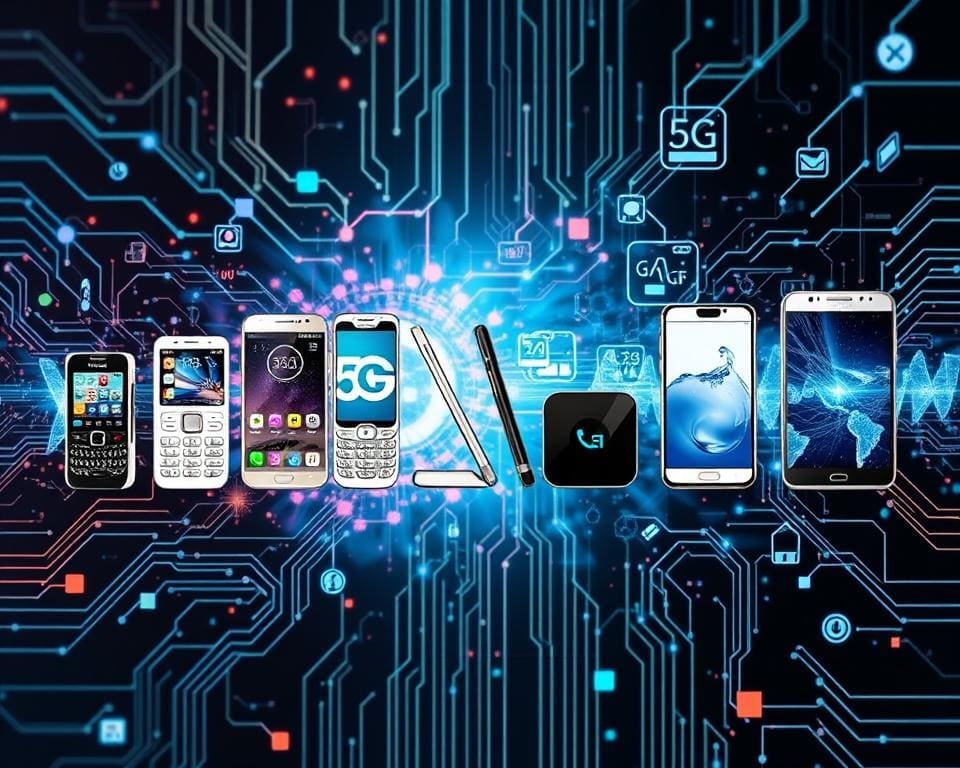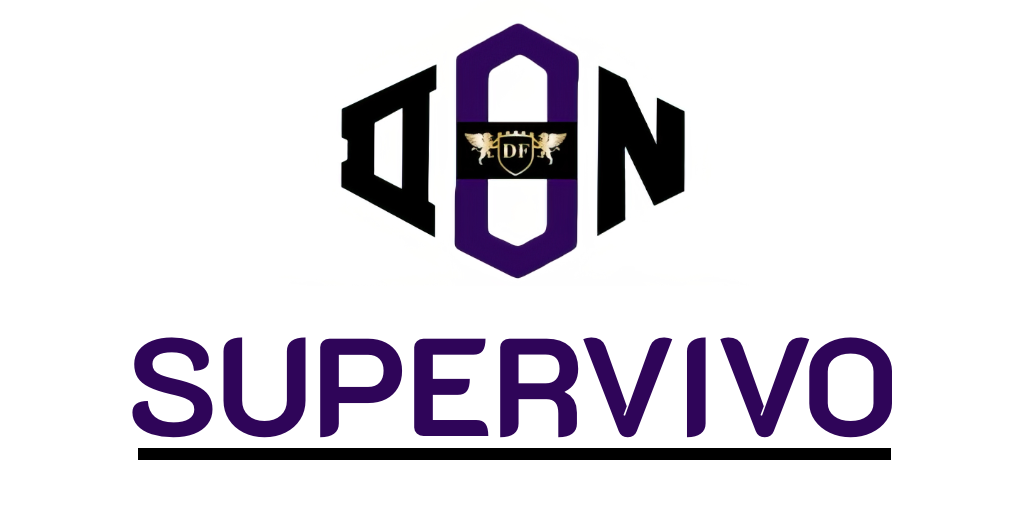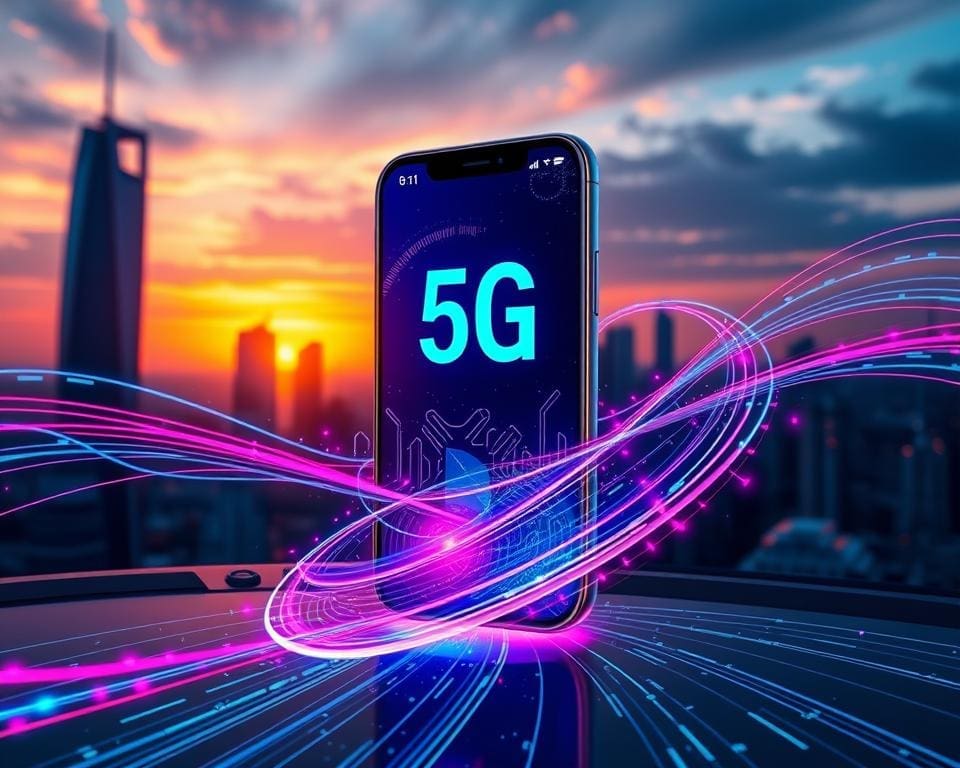The advent of 5G technology marks a pivotal moment in the evolution of smartphones and mobile devices. With unprecedented speed and connectivity, 5G is set to revolutionise the user experience, driving innovations that enhance everything from gaming to video streaming. This transformative technology not only surpasses its predecessors but also creates a foundation for future advancements. As we delve deeper, we will uncover the extraordinary ways in which 5G is reshaping our digital landscape.
The Evolution of Smartphones
Smartphones have undergone a remarkable transformation since their inception, reflecting a fascinating journey marked by significant milestones. The evolution of smartphones began with the introduction of 2G technology, which set the foundation for mobile communication. As each generation emerged, connectivity improvements paved the way for enhanced user experiences, more efficient data handling, and innovative applications.
From 2G to 5G: A Quick Overview
The journey from 2G to 5G has been a testament to human ingenuity and technological advancement.
- 2G: Introduced basic voice services and SMS, offering a glimpse into mobile connectivity.
- 3G: Brought significant upgrades with faster data rates, enabling mobile internet access.
- 4G: Redefined the landscape with robust speeds and seamless streaming experiences.
- 5G: Represents the pinnacle of mobile technology, delivering unparalleled speed and low latency.
How Each Generation Improved Connectivity
Every generation of mobile technology has contributed to the overall evolution of smartphones through remarkable connectivity improvements. Here’s how each generation made an impact:
- 2G: Established basic digital voice and text, laying the groundwork for future developments.
- 3G: Enabled users to browse the web on the go, marking a significant leap in mobile applications.
- 4G: Enhanced video streaming capabilities and facilitated the rise of data-heavy apps.
- 5G: Allows for innovations in IoT, augmented reality, and real-time communication.

Understanding 5G Technology
The advent of 5G technology marks a significant leap forward in the field of network science. This next-generation mobile network offers unparalleled low latency and high speed, revolutionising the way users interact with their devices. To fully appreciate these advancements, it’s essential to delve into the mechanisms that underpin this groundbreaking technology.
The Science Behind 5G Networks
5G technology utilises millimetre wave frequencies and massive MIMO (Multiple Input Multiple Output) systems to enhance connectivity. These innovations allow for the transmission of data across multiple antennas, leading to improved signal strength and capacity. The deployment of small cell networks further optimises coverage, ensuring users experience seamless transitions between different service areas.
Low Latency and High Speed: What It Means for Users
The benefits of low latency and high speed are particularly pronounced for mobile users. With latency reduced to mere milliseconds, activities such as online gaming, video conferencing, and real-time collaboration become incredibly efficient. Users can download files rapidly, engage in immersive applications, and enjoy a remarkably responsive user experience like never before. This transformation in connectivity empowers individuals and businesses alike to leverage the full potential of advanced mobile technologies.
Smartphones: How 5G Changes Everything
The advent of 5G technology heralds a new era in mobile devices, particularly in the realms of entertainment and gaming. With enhanced connectivity, users now experience mobile gaming and video streaming like never before. This transformation unlocks potentials previously thought unattainable, making activities more immersive and enjoyable.
Impact on Mobile Gaming and Entertainment
The 5G impact on mobile gaming is profound. Gamers can now enjoy ultra-responsive gameplay, with minimal latency enhancing their overall experience. High-quality graphics that provide vivid experiences are accessible as devices harness the power of 5G networks to render stunning visuals effortlessly. This shift paves the way for competitive gaming and casual play on the go, making every session exhilarating.
Enhanced Video Streaming Experience
Video streaming services benefit significantly from 5G connectivity. With faster download speeds, users can watch their favourite shows and movies in higher resolutions without interruptions. Buffering becomes a rare occurrence, allowing for a seamless viewing experience. This enhancement in video streaming aligns with the growing demand for high-definition content in today’s entertainment landscape.
Augmented Reality Applications
Augmented reality, empowered by 5G, is transforming how users interact with digital content. Applications that require real-time data processing can function smoothly, offering real-time user immersion. From gaming experiences to practical applications in education and retail, the possibilities are boundless. This layer of interactivity elevates the smartphone use case, enhancing both entertainment and everyday functionalities.
The Role of 5G in Mobile Device Innovations
The introduction of 5G technology heralds a new era for smartphone features, presenting a landscape rich with possibilities and advancements. As mobile device innovations evolve, consumers can expect sophisticated enhancements driven by rapid connectivity and improved processing capabilities.
What’s Next for Smartphone Features
Future technologies will place a significant emphasis on incorporating advanced biometric security systems, offering users unprecedented levels of protection. Enhanced camera functionalities, such as real-time image processing and superior low-light performance, will transform mobile photography. Battery life improvements will also coincide with 5G’s capabilities, allowing for longer usage without frequent charging.
Integrating AI and 5G Technologies
AI integration will be crucial as future smartphones become increasingly intelligent. This synergy optimises device performance, enabling personalised user experiences through predictive analytics. Applications will leverage AI to enhance everyday tasks, from voice recognition to automated photography adjustments. Expect a landscape where mobile device innovations are not just about speed, but also about delivering tailored interactions, making smartphones an essential part of daily life.
Transforming Connectivity for Businesses
The advent of 5G technology is significantly reshaping business connectivity, particularly in the realm of remote working. Organisations are increasingly relying on sophisticated collaboration tools, enabling teams to communicate and coordinate regardless of geographical barriers. This technology fosters an environment where employees can work efficiently from virtually anywhere, ensuring productivity remains high.
Remote Working and Collaboration Tools
The flexibility of remote working has never been more achievable. With 5G, video conferencing, file sharing, and cloud-based applications happen seamlessly. The reduction in latency and increase in speed provided by 5G allows for uninterrupted communication, which is essential for teams operating in different locations. Enterprises can take full advantage of advanced collaboration tools, enabling real-time brainstorming and problem-solving.
Streamlining Operations with 5G
Beyond enhancing remote working capabilities, 5G technology plays a pivotal role in streamlining operations and boosting operational efficiency. Real-time data processing becomes a reality, allowing companies to analyse information on-the-fly and make informed decisions swiftly. This leads to smarter resource allocation, improved customer service, and a more agile response to market changes.
The Impact of 5G on Everyday Life
The arrival of 5G technology significantly reshapes everyday life, particularly in the context of smart cities. This transformation enhances urban connectivity and integrates IoT devices into daily experiences, providing seamless communication and innovative solutions for common challenges.
Urban areas are increasingly adopting smart infrastructure, utilising IoT applications like smart metres and enhanced traffic management systems. These integrations contribute to a cohesive urban environment, where data flows freely, enhancing services and overall quality of life.
Smart Cities and IoT Integration
Smart cities are at the forefront of the 5G impact, showcasing how technology can enliven urban spaces and improve everyday life. With the support of IoT devices, crucial information is collected in real-time, enabling better management of resources and services. Examples include:
- Smart traffic lights adjusting based on traffic flow to reduce congestion.
- Connected waste management systems that optimise collection routes.
- Smart home technologies improving energy efficiency and convenience.
This real-time data collection not only creates efficient urban environments but also fosters a more engaged community, where residents can interact with their city’s digital infrastructure. Enhanced urban connectivity leads to smarter decision-making and planning, ensuring that cities adapt to the evolving needs of their inhabitants.
Challenges and Concerns with 5G Implementation
The roll-out of 5G technology presents significant challenges that merit attention. Both health concerns and infrastructure costs emerge as key areas for discussion. Managing public perception remains crucial in addressing safety myths and ensuring the successful integration of 5G into daily life.
Health and Safety Myths
Amidst the advancement of 5G, various health concerns have surfaced which often lead to widespread misconceptions. Many people believe that the radiation emitted from 5G towers poses serious health risks. Scientific studies consistently demonstrate that the levels of radiation from these networks remain well within safe limits established by health authorities. Numerous experts have debunked these safety myths, assuring the public that 5G technology does not pose a threat to general health.
Infrastructure Costs and Coverage Issues
The installation of 5G technology involves substantial infrastructure costs. Upgrading existing networks to accommodate 5G’s advanced requirements necessitates significant financial investment. This expense can often lead to uneven coverage issues, particularly in rural areas where resources are limited. Urban centres may benefit from faster roll-outs due to their population density, creating a gap in availability for users in less populated regions. Addressing these challenges remains vital for a uniform experience across different demographics, ensuring everyone can harness the benefits of 5G.
The Future of Smartphones in a 5G World
As we stand on the brink of a new technological era, the future of smartphones looks both exciting and transformative. With the advent of 5G technology, we are witnessing a rapid evolution in mobile innovations that will shape how we interact with our devices and each other. The reduced latency and enhanced speed of 5G are not merely improvements; they represent a paradigm shift in connectivity, enabling features and services that were previously unimaginable.
Looking ahead, we can speculate about the potential impact of upcoming advancements like 6G technology, which promises even greater connectivity and data transfer speeds. These innovations will likely result in smartphones becoming not just communication devices, but essential tools for a fully interconnected world. Users will find themselves engaging with augmented reality experiences, seamless virtual interactions, and smarter applications that harness the power of artificial intelligence alongside 5G.
In this evolving landscape, shifts in user behaviour are anticipated. As smartphones become more integral to daily life, the relationship between people and technology will deepen. The focus will shift towards enhancing social interactions, productivity, and overall quality of life, driven by the burgeoning capabilities that emerge from the 5G world. Thus, the future of smartphones is poised to redefine our societal norms, offering endless possibilities and paving the way for extraordinary technology trends.









